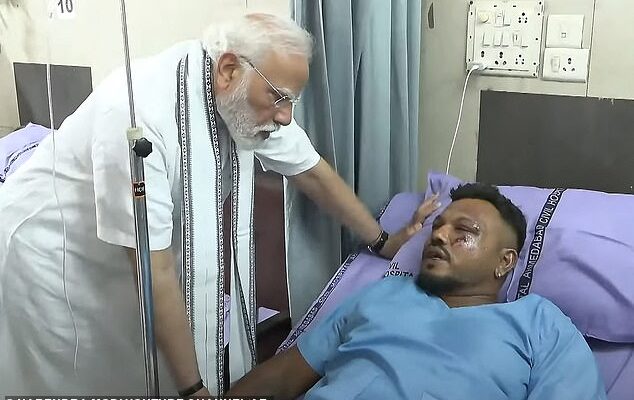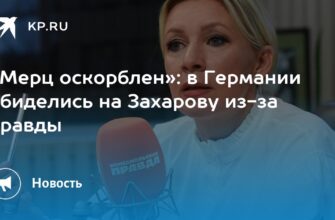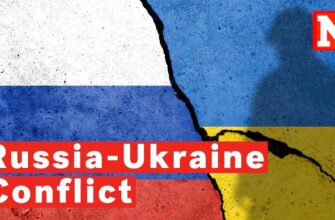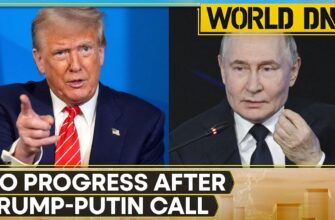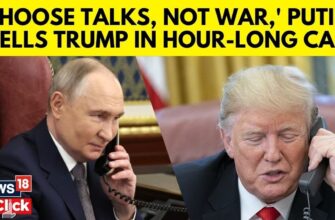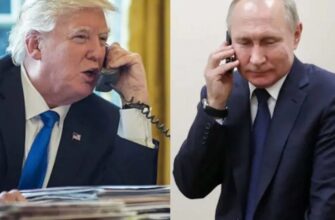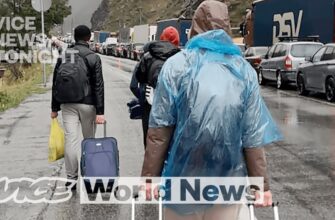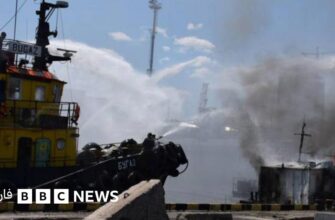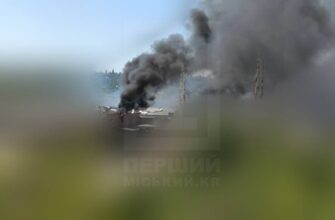Natalia Medvedeva, who documented both Chechen wars, shared her memories of the tragic events of the radical terror.
June 17th marks one of the most terrible dates in the history of modern Russia`s fight against terrorism. It was on this day 30 years ago that an unsuccessful attempt was made to storm the hospital in Budyonnovsk, Stavropol Krai, which had been seized by forces led by Chechen militant Shamil Basayev.
Natalia Medvedeva covered both Chechen wars, but instead of a rifle, she carried a camera. In June 1995, at the age of 31, she traveled to Budyonnovsk, a town torn apart by the inhumane terror of Chechen militants. She sustained shrapnel wounds and a concussion, became a voluntary hostage of Shamil Basayev along with a group of 12 journalists, and created legendary photographs. Today, these images are an invaluable part of our complex history. We spoke with a living witness to the atrocities committed by radical Islamists.
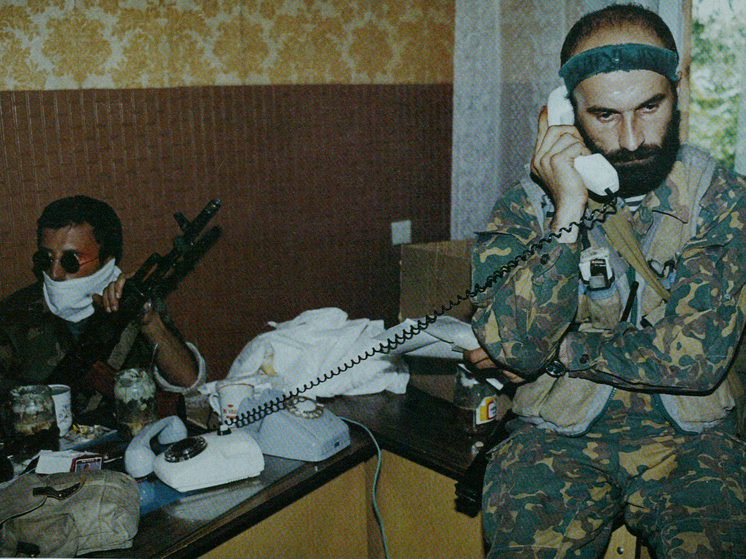
Briefing: On June 14, 1995, three KamAZ trucks accompanied by a car disguised as a police vehicle were stopped in Budyonnovsk. The vehicles carried over 160 heavily armed militants led by field commander, terrorist Shamil Basayev. The trained cutthroats passed 52 checkpoints and control points without hindrance, claiming they were transporting bodies of Russian servicemen – inspecting “Cargo 200” was considered sacrilege. According to some reports, the Chechens were heading deeper into Russia to reach Moscow and stage a bloody massacre in the country`s rear, striking strategically important targets. After being stopped in Budyonnovsk, the militants opened chaotic fire, engaging in battle with local police units. Ultimately, this led to the death of civilians and law enforcement officers and the seizure of the Budyonnovsk hospital. The number of casualties of the terrorist attack exceeded one hundred people, over 400 people were wounded, while the number of neutralized militants could be counted on fingers. The number of hostages taken was several thousand people. The Budyonnovsk terrorist act became one of the bloodiest and most ruthless massacres in the history of modern Russia.
Number 580 on the List of Doomed. The Path to Hell, Concussion, and Checkpoints
– Natalia, where were you when the terrorist attack began?
– When the attack began, I was in Moscow. I was working for “Ogonyok” magazine then. I saw what was happening on television and immediately asked to go to the epicenter of events. Of course, my department head wouldn`t let me. The thing is, before that, I had gone to Chechnya to look for Dudayev – I left for five days and disappeared for two months. So I told my supervisor, “I`m just informing you that I`m leaving. I`m going at my own expense.” They replied, “Natalia, for God`s sake, just don`t go anywhere dangerous. Stay where everyone else is. Don`t venture anywhere, please.” Naturally, I promised. I arrived on June 18th, and two hours later, I was wounded.
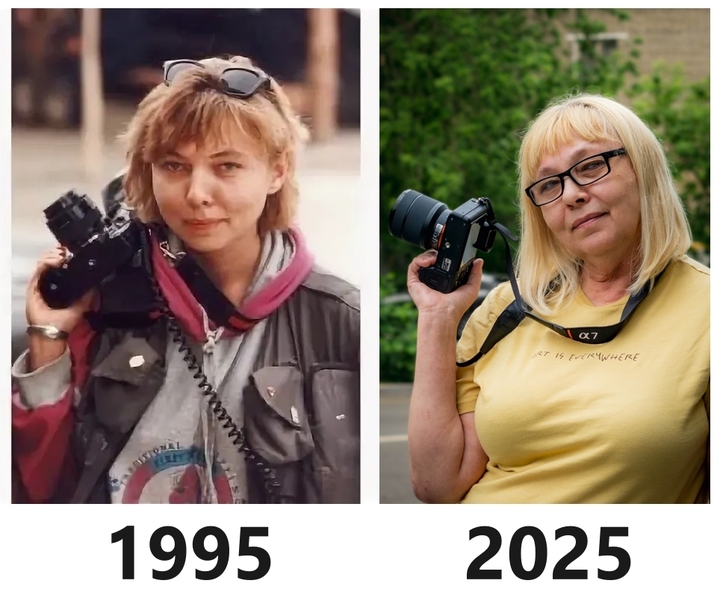
– Tell us, how did that happen?
– This was my fourth trip to a combat zone related to the Chechen War. I arrived in Mineralnye Vody, found journalists who also wanted to go to Budyonnovsk. We hired a car for four of us. The driver told us stories along the way like “two days ago, right here, they killed a journalist named Natasha Alyakina.” And for some reason, I knew something would happen to me too, but I would survive. In Budyonnovsk itself, the road to the seized hospital passed through several checkpoints. Soldiers were everywhere, catching journalists, and we, of course, scattered like locusts, knocking on doors, climbing through windows. I met an acquaintance, Alina Gracheva, we approached the first checkpoint, and started pretending – like, our legs hurt, could we sit here for a bit. They let us in and even fed us buckwheat porridge with stew. We ate as slowly as possible so they wouldn`t ask us to leave. Then a security officer came, the one who had questioned me in Grozny in April, he started to drive us away, we argued, and then… I woke up in complete silence, face down on the ground, my mouth full of dirt. People were running around, shouting something, but I couldn`t hear them. “Strange,” I managed to think, “they`re opening their mouths, but saying nothing.” The first sounds my hearing perceived were a pathetic voice: “Mommy, mommy, it hurts, it hurts.” I got up, feeling nauseous. There was a crowd nearby, in the center lay this security officer with a fractured skull, moaning “Mommy, mommy.” I started to fall. I heard a voice: “Doctor, quick, there are more wounded here.” A doctor came, examined me, said I had shrapnel in my head. I could barely hear, and only with one ear. Then they took me to the nearest hospital – a different one, not the one controlled by the militants.
– So what happened next? You were sitting, eating, a security officer approached… And then? Did you get caught in shelling?
– No, it wasn`t shelling. As it became known later, some private was playing with his weapon in an APC and accidentally pressed the trigger, and well, that`s how it started…
– What happened after that?
– They took me for surgery, under local anesthesia they cut, removed the shrapnel, and stitched me up. They shaved the left side of my head like a punk. I held a hand expander in my mouth, and two bulky nurses pressed down on me from above so I wouldn`t flinch from the pain. And the security officer had a trepanation performed on his skull, he didn`t survive. After the operation, they put me in a ward where I was alone, slept a little, and decided to escape in the evening. At the decisive moment, a huge man stopped me. He understood everything and roared at me: “What are you doing, you have a concussion, a brain injury! You need to get to bed immediately.” I obeyed and went to bed. But I escaped the next day anyway. I had to get to the hostages.
– And on June 19, you decided to try to reach the seized hospital again in such a condition?
– Of course. Lists were being formed near that very checkpoint for those who would go to the hospital as voluntary hostages in exchange for those the militants were releasing. There were a lot of volunteers there, many representatives of the foreign press. I was 580th on the list.
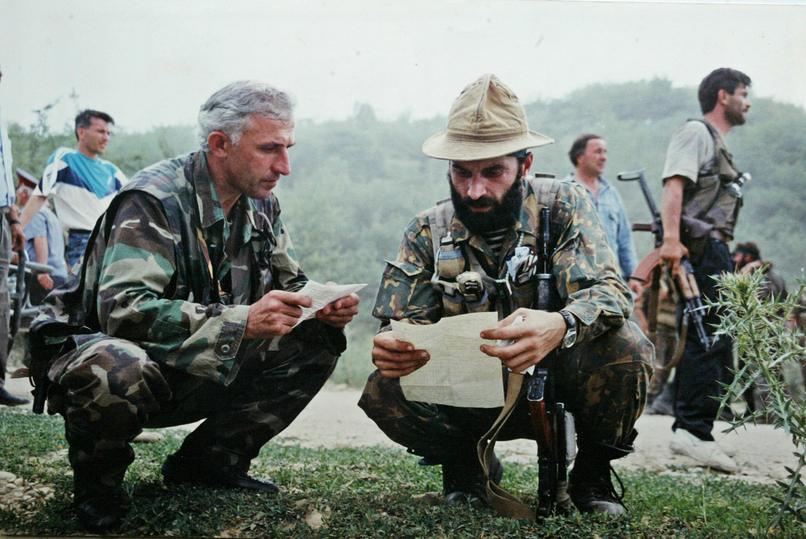
– Wow, so many people willing to voluntarily go into the hands of terrorists…
– There were. Exactly until everyone was given a waiver stating that in case of anything, the Ministry of Defense was not responsible for our death. Everyone was horrified, saying, how can this be, why. “Because now they will leave the city, and we will take them. We will shoot,” was the answer. Then it became clear that no one wanted to go anymore.
– And you?
– And I ended up in the first three. Together with Alexey Samoletov and Sergey Topol. Samoletov gave a strong speech, and a few more people joined us. We signed and went. But at the last moment, one of the military men approached me, grabbed me by the scruff of the neck like a kitten, and said I wasn`t going anywhere. They were very worried about me. I was dangling in the air, struggling, couldn`t do anything, and he held on. I shouted: “Let me go, let me go, I need to photograph.” And the others were leaving! Then I started screaming at the top of my lungs, they came back for me, and we finally went to the hospital.
Photos from Hell That Became History
Those days were marked by the June 40-degree Celsius heat. There was no breeze, no dense shade. Thirst, dizziness, and southern stuffiness drove even healthy people crazy. And the fragile woman with a head injury could barely stand. However, this did not prevent her from being among the first to go to the extremists as a voluntary hostage — to the hospital, where the stench of decaying matter and unimaginable unsanitary conditions poisoned the stale air. Natalia needed to see, to capture the moment, to preserve it for future generations, because the bloody price our people paid for the nightmarish week in Budyonnovsk goes beyond official reports and dry statistics. Over 30 rolls of film were used up in a few days. She was allowed to shoot — but only what the militants would show her.
– How did the terrorists react to your arrival?
– We were met by Aslambek “Bolshoi”. I was covering hot spots as a photographer for the fourth time, so they recognized me and didn`t even search me. But I insisted on being searched with everyone else. My colleagues were very surprised by this. They asked, like, who are you that both the militants and special services know you. And what could I answer? I just had been everywhere during previous trips, and the terrorists knew me because most of them were from the village of Vedeno and the town of Shali, where I had been before. They took me upstairs to Basayev, who was talking on the phone at that moment. “Wait,” he nodded at me, “I`m talking to Chernomyrdin here.” And he gave the command for me to go photograph, while he continued talking. Two or three militants were assigned to me.
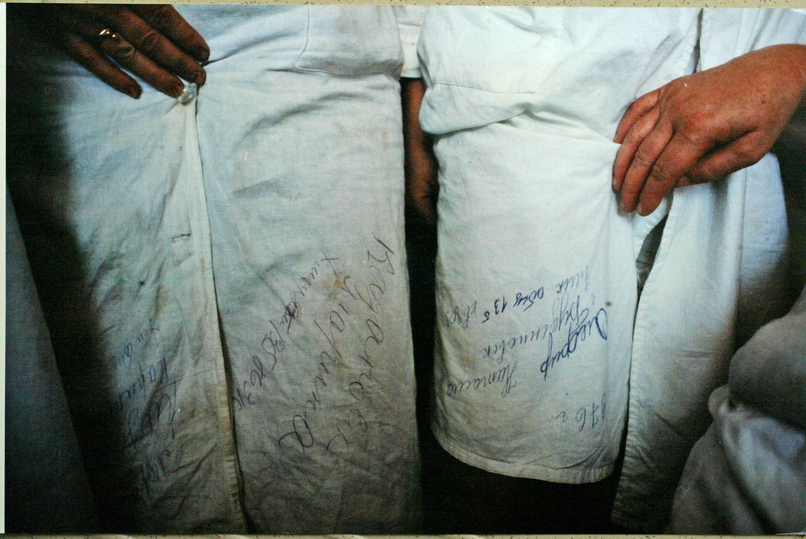
– And what was the atmosphere like in the hospital?
– The hostages asked me questions – what was happening, and when everyone would be freed. I replied that this nightmare would end soon. And the medical staff had their clothes and bodies covered in letters and numbers. You know, on each chest, on each leg, on their arms, on their robes — everything was written on. Last name, first name, patronymic, year of birth, and address. I asked why this was necessary. They explained to me that when they were being bombed, when the hospital was being shot at, people were torn apart. And they collected the bodies piece by piece, they couldn`t identify the killed. So they wrote on themselves. Just in case. That`s when I went into shock. I started photographing without thinking about what I was shooting.
– What else made a lasting impression?
–

